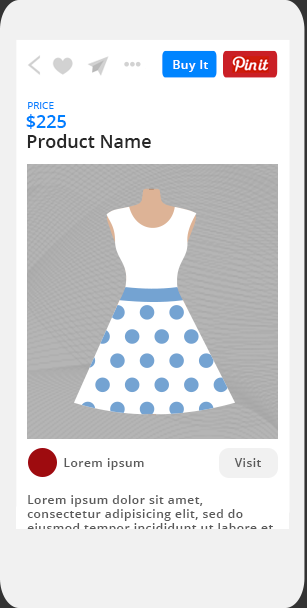



In the U.S., 180 million consumers use social media, according to eMarketer. By the end of 2016, that number will grow to 185.4 million.
Consumers across all age groups are embracing social media to learn about and engage with brands. On a global scale, Facebook has acquired more than 1.4 billion monthly active users, while Twitter (302 million) and Instagram (300 million) also have strong followings. As more consumers gravitate to social networks, retailers strive to not only create their own thriving communities, but also leverage these communities to drive engagement and sales.
“We've seen from our research studies that consumers — from Millennials to Empty-Nesters — take a more purposeful and discerning approach regarding brand engagement and interaction,” said Stacy DeBroff, CEO of Influence Central. As many as 40% of Empty-Nesters follow brands on social media to learn about promotions and deals, while 30% do so to ask customer service-oriented questions, according to Influence Central Research. Conversely, 66% of Millennials follow brands on social media.
Even with a large, thriving and engaged community at their disposal, retailers have struggled to crack the social code. Back in 2011, retailers thought Facebook storefronts would be the solution to their social woes. After many retailers quickly started and stopped Facebook initiatives, the industry as a whole was back to square one.
But today, the retail industry is witnessing a social media revival. New tools, tactics and consumer behaviors are driving a new era of social selling where content, feedback and community create tangible results for retailers across verticals.
Top Social Networks Refine Paid Ad Models
Social selling has become a key conversation point following announcements from Facebook, Twitter, Instagram and Pinterest regarding improvements to their paid advertising models. Some also are adding commerce functionality to their ads, helping to eliminate the barriers between social networks and retailers’ products.
In June 2015, Facebook announced that it was expanding beta testing for its new buy button, which was developed in partnership with Shopify. The new offering is designed to create a call-to-action on the platform, and enable consumers to easily purchase products discovered on news feeds and company pages. Shopify extended the buy button to a limited group of U.S. merchants. Twitter has rolled out a similar offering that allows brands and retailers to embed products and offers in tweets.
Despite Facebook and Twitter both announcing pilots for new buy buttons, Pinterest was the network that made the most impact by announcing a partnership with Demandware. Through this partnership, Demandware has developed an integration that is designed to enable a secure mobile checkout experience within Pinterest.
A variety of brands have already implemented the new functionality, including Cole Haan, Ethan Allen, Kate Spade and Michaels — all Demandware clients.
Neiman Marcus also is making its pins shoppable on any iOS-enabled device. “We know that our customer is highly engaged with Pinterest,” noted Natalie Bowman, VP of Media at Neiman Marcus Group. “We’ve done a number of promoted Pinterest campaigns and will continue to do so.”
The move to shoppable pins is natural and poised to be profitable because “Pinterest is the perfect visual playground for building wardrobes and personal look books,” Bowman added. “We strive to provide content that inspires our customers.”
It is still too early to determine whether the shoppable pins lead to hard sales, but Neiman Marcus is using its blog, web site and social media channels to drive awareness, education and adoption.
Retailers that are not ready to dive into the buy button fad may want to consider partnering with Instagram, which is taking a more organic approach to advertising. With carousel ads, a variety of brands such as Banana Republic, Old Navy and L’Oreal Paris are telling more detailed brand stories via a series of Instagram images. Rather than having one static image, carousel ads allow brands to include a series of images, which can help boost engagement.
“Carousel ads give brands more flexibility in telling their stories by allowing people who view their ads to swipe left to see additional images and link to a web site of the brand’s choice,” according to the Instagram for Business blog. For example, Banana Republic used carousel ads to show the diversity of its spring collection. The apparel retailer showcased style blogger Aimee Song, who shared a different look in each phase of the ad.
“With a carousel, our customers can discover more if they want as we spotlight some of our favorite products and share styling ideas across multiple images,” said Aimee Lapic, SVP and GM of Customer Experience at Banana Republic. “Creating relevant content for our customers, while also making it easier for them to shop, is a win-win.”
Whether retailers decide to advertise via Facebook, Twitter, Pinterest or Instagram, they “can’t lose sight of what made these sites so popular in the beginning,” noted Kim Smith, SVP of Product at HelloWorld. “If you’re on Instagram and uploading these beautiful images, the last thing you want to do is upload a standard product shot. And if you plan to use Twitter’s buy button, it may be more effective to have a message that’s timely, or promote limited-quantity items. It has to tie to why you would visit that specific social network in the first place.”
Focus On Removing Shopping Friction Points
When it comes to social media advertising, retailers walk a fine line between being helpful and obstructive. In the case of the buy button, however, businesses have the opportunity to cure a real friction point for shoppers, according to Laura Davis-Taylor, EVP of Customer Experience at MaxMedia.
“Social is a critical channel people use for inspiration and curation,” Davis-Taylor said. “Think about how often we see something on Facebook or Pinterest, but we can’t easily take action to purchase it. These emerging models resolve that and make it easy to turn an unexpected, emotionally driven ‘I love that’ into a quick and impulsive ‘I’m buying that now!’”
With their new advertising models, these social networks are “aiming to disrupt the payments market,” added Christopher Russell, CEO of Skrill USA. “Adding a buy button enables consumers to make online purchases with just a single click. In the future, this process will be even further improved whereby customer details will be saved and can be reused when purchasing from other merchants using the same payment infrastructure.”
These new buy buttons also can provide new measurement tracking and analytics — something marketers have been struggling to acquire for years in the social realm.
“It has been so difficult to constantly defend social budgets because most retailers have demanded proof that it can drive traffic and sales,” Davis-Taylor noted. “Hopefully, these kinds of solutions will ease that.”
Although all eyes and ears are on social networks’ new advertising opportunities, successful social selling is not limited to paid marketing efforts.
“Social selling can be defined more broadly as using social channels or community to engage in conversations that eventually drive product sales,” explained Andrea Fishman, a Partner in PwC’s Advisory practice. “It’s really taking a look at how to position a retailer’s products in a way that is interesting and engaging to users, and encourages dialogue across their purchasing path.”
Today, successful brands are learning how to leverage their core audience on social platforms, according to Fishman, and are “increasing reach and engagement with their core audience and beyond to drive revenue through influence.”
“Retailers must use to identify who is acting on their behalf, what their influence level is and then do
things to show them that they appreciate their support.”
— Laura Davis-Taylor, MaxMedia
Content Has The Greatest Influence In A Social Selling Strategy
Consumers rely on social networks to generate, share and access a wealth of content. This content can range from ratings/reviews, to product descriptions, user-generated content as well as branded content and images.
“Content is king, and retailers that scrimp on their online content are akin to setting up a store that has empty shelves — consumers are just not going to go there nor stay there,” said Lance Eliot, VP of Information Technology at Interactions. Once retailers get helpful content on their sites and social media accounts, they can’t fall down on the job.
“You can’t just do it once,” Eliot added. “You have to continually refresh your content, similar to keeping your in-store shelves refreshed with the latest products that can wow the consumer."
It is important to realize, though, that content formats and approaches may vary based on company vertical and target consumer. For example, home improvement retailers can drive engagement with step-by-step tutorials, while apparel retailers may find more value out of look books or image slideshows featuring the latest seasonal trends.
“Retailers need to understand context and what consumers are doing on a social network,” Smith said. “Are they looking for inspirational content on home décor via Pinterest? Or do they just want to learn more about what their friends and family are doing?”
While branded content undoubtedly adds more depth and value to the overall shopping experience, user-generated content (UGC) inspires consumers by showing real-life use cases and scenarios for products they’re thinking about buying.




Millennials in particular find value in UGC: They spend 30% of their media time — approximately five hours a day — engaging with UGC, according to Ipsos MediaCT research. This consumer group finds UGC 35% more memorable than other media and 50% more trusted. The vast majority (80%) of Gen Y consumers even say that UGC from people they don’t know influences what they buy, according to Bazaarvoice.
Due to the increasing influence of UGC, new solutions are emerging to help businesses monetize this content — especially images. For example, Lilly Pulitzer used Like2Buy to boost book sales during the holiday season. The historic brand created a book of 5x5 art prints. Photos tagged with the #Lilly5x5 hashtag generated more than 4.4 million interactions and accounted for 33% of the brand’s platform engagement. Because all images also were shoppable, Lilly Pultizer saw a 400%+ increase in traffic to the web site from Instagram during Thanksgiving 2014.
As part of its own strategy, Benefit Cosmetics partnered with Olapic to aggregate UGC for its They’re Real mascara. Using the hashtag #realsies, consumers were encouraged to publish images of their own make-up looks. With consumers’ permission, the beauty brand went on to use this UGC in banner ads and other content.
“UGC is capable of being the most impactful type of content in the social realm, provided there is complete transparency on who is sharing said content,” said Ulrika Haug, Director of Product Marketing at Lithium. “Consumers want to know who they’re getting their advice from, and what that person’s level of expertise is on the topic. By empowering users to create content, brands can scale to meet their growing customer expectations, improve SEO and ensure that they have a presence on the myriad channels that potential customers may be using to research a purchase.”
Regardless of whether a retailer decides to leverage branded or user-generated content, it is imperative that all resources, photos and assets showcase how an item can be used within the lifestyle of a customer, according to Davis-Taylor. “Context is incredibly important. Before you specify what type of content you want to use, you have to look at where the person is at the specific moment, in what type of ‘place’ and at what potential buying stage. For social, it has to come from this pure place — not a selling one. If it’s obvious selling, then it’s an ad and will be tuned out.”
Social Listening And Analytics: Retail’s Connection To Brand Advocates
As retailers publish valuable content from their own branded arsenal and from their shoppers, they should track consumers’ overall engagement with photos and posts. With this detailed data, retailers can identify which consumers are highly engaged, and also determine which shoppers would potentially market on their behalf.
“Retailers must use great tracking tools to identify who is acting on their behalf, what their influence level is and then do things to show them that they appreciate their support,” Davis-Taylor said. “At the most basic level, communicate back to them to say thank you. Go a step further and give them a little gift or incentive to strengthen the relationship and advocacy behaviors.”
If retailers truly want to drive advocacy and turn high-profit customers into valuable marketing mouthpieces, they need to “elevate their status and provide them with special experiences,” Fishman advised. “This is a tried-and-true strategy for building an advocate group. Invite them behind the black curtain.”
This advocate group can become a valuable resource for future decision-making. “Social analytics can help companies get specific user-generated input on innovation across products, strategies and even core company values,” said Dana Miller, SVP of Client Services at Crimson Hexagon. “Social data can permeate every function, which is really exciting.”
By leveraging their most loyal and engaged customers, retailers can ensure their overall business strategies align with the wants and needs of target customers. This will result in more effective campaigns and product lines, and will help retailers create a truly community-driven business.

Questions? Send us an email at info@retailtouchpoints.com
COPYRIGHT © 2015 RETAIL TOUCHPOINTS. ALL RIGHTS RESERVED.


